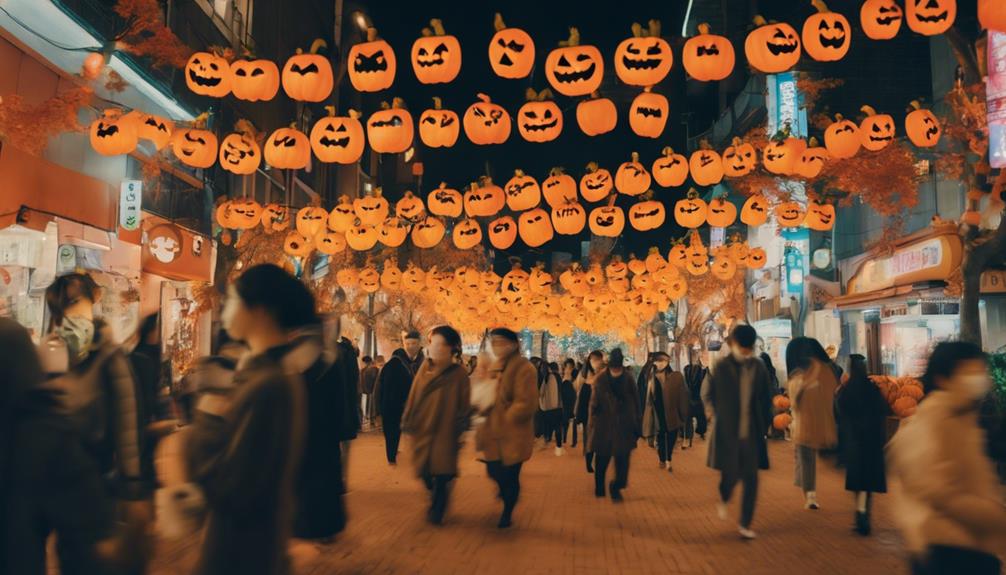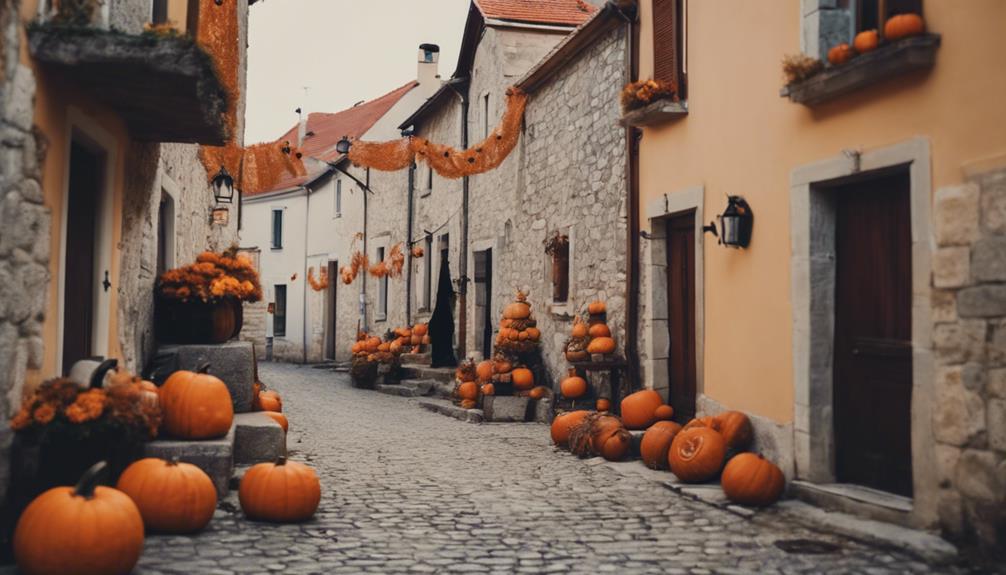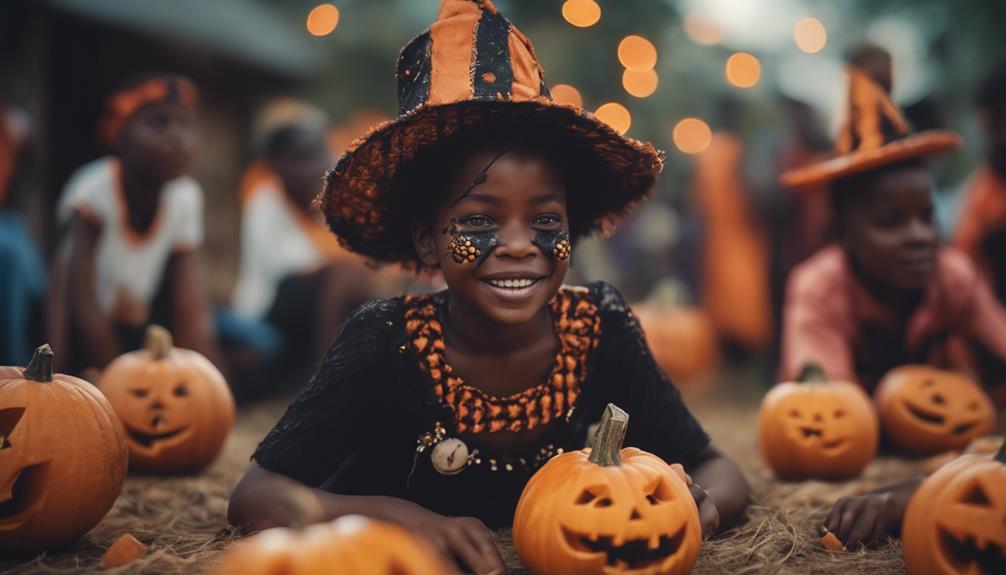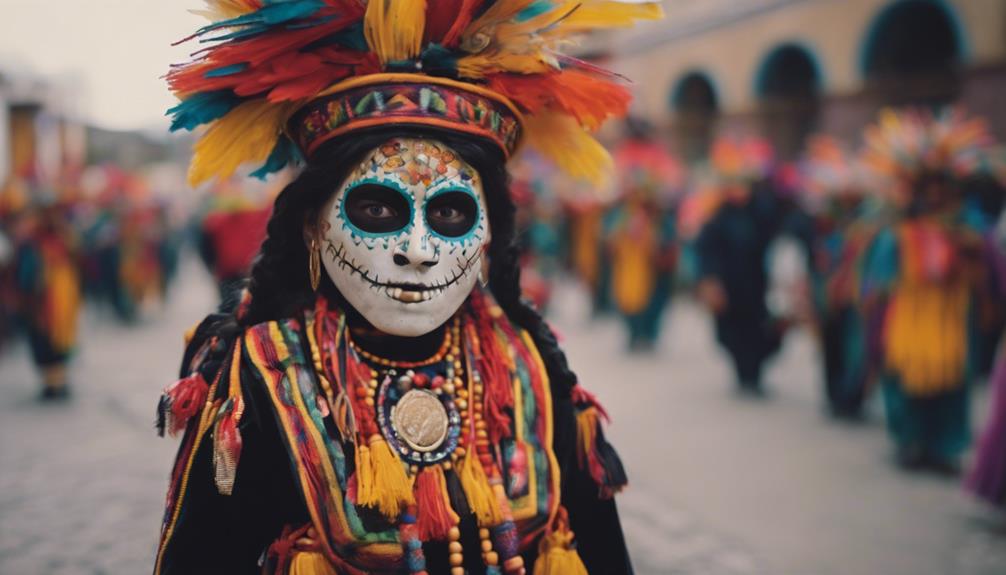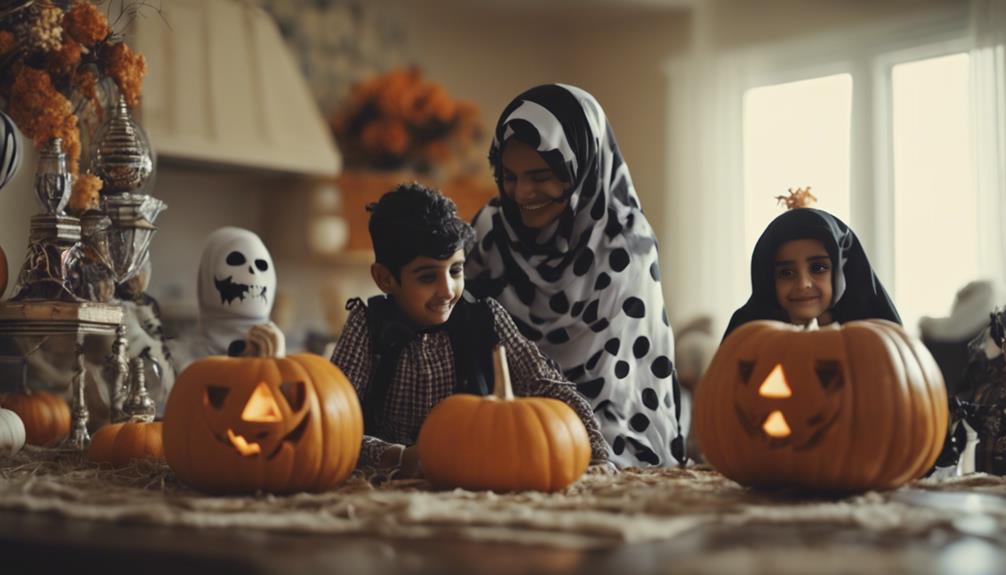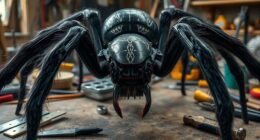South Koreans enthusiastically embrace Halloween traditions, melding Western influences with local customs to create a vibrant and popular celebration, especially among the youth. The early 2000s saw a surge in Halloween's appeal, with social media and English-language schools playing significant roles in its dissemination. Itaewon stands out as a focal point for Halloween festivities, where themed events and costume parties draw in both residents and visitors. The blending of traditional Korean customs with Halloween practices reflects a cultural evolution in South Korea. Dive deeper into the intriguing fusion of traditions that has captivated the nation's imagination.
Key Takeaways
- South Koreans embrace Halloween traditions, blending Western influences with local customs.
- Young population actively participates in Halloween festivities in South Korea.
- Itaewon is a popular spot for Halloween celebrations in South Korea.
- Social media platforms amplify the popularity of Halloween events.
- Traditional Korean customs are blended with Halloween traditions in urban areas.
The Popularity of Halloween in South Korea
In the early 2000s, Halloween started gaining popularity in South Korea due to the influence of Western traditions introduced through English-language schools and social media platforms. South Koreans began to embrace Halloween by organizing costume parties and themed events at popular amusement parks like Everland and Lotte World. Itaewon emerged as a hotspot for Halloween celebrations, drawing in party enthusiasts and online streamers during the festive season.
The country's young population actively participates in Halloween festivities, with many dressing up in costumes without fear of judgment. The Zombie Run Festival and other spooky activities have become favorite pastimes for the youth in South Korea. The impact of social media and Western traditions has played a significant role in the evolution and acceptance of Halloween celebrations among the younger generations in the country.
As a result, Halloween has become a widely celebrated and embraced occasion in South Korea, with idol celebrations and various themed events adding to the excitement surrounding this Western tradition.
Traditional Korean Customs Vs. Halloween Traditions

Traditional Korean customs and Halloween traditions differ greatly in their cultural practices and celebrations.
While Korean customs focus on ancestral rites, harvest festivals, and Confucian rituals, Halloween traditions in Korea revolve around costume parties, themed events, and idol celebrations.
The blending of these two cultural practices showcases a unique fusion of old and new traditions in South Korea.
Korean Vs. Halloween
When comparing Korean customs with Halloween traditions, a distinctive blend of cultural elements emerges during the celebrations in South Korea.
- Traditional Korean customs center around ancestral rites and seasonal festivals, while Halloween traditions involve costume parties and themed events.
- Halloween in South Korea has gained popularity in urban areas, leading to a mix of Western and Korean cultural elements during the celebration.
- Korean Halloween celebrations include dressing up in costumes, attending themed events at amusement parks, and exploring haunted houses.
- Trick-or-treating is becoming more common in South Korea, especially in urban neighborhoods, as children embrace the Halloween tradition.
The fusion of traditional Korean practices with the fun and spooky aspects of Halloween has created a unique celebration in South Korea. Urban legends intertwine with modern Halloween events, and Korean youths enjoy the thrill of haunted houses alongside the excitement of donning Halloween costumes. The increasing adoption of Western Halloween traditions in South Korea showcases a cultural exchange that enriches the festive landscape of the country.
Cultural Blending Traditions
As you explore the fusion of cultural elements between Traditional Korean Customs and Halloween Traditions, a dynamic tapestry of celebrations emerges in South Korea.
Traditional Korean customs, such as Chuseok and Seollal, center around honoring ancestors and family gatherings, standing in contrast to Halloween's focus on costumes and spooky themes. However, Halloween traditions like costume parties and haunted attractions have gained popularity in South Korea, blending with Western influences.
While traditional Korean customs involve ancestral rites and respectful ceremonies, Halloween presents a more playful and lighthearted approach to festivities. Korean youth often embrace Halloween events, enjoying the opportunity to dress up in costumes that showcase a blend of traditional and modern cultural influences.
This cultural blending signifies a growing interest in Western culture among South Koreans and a willingness to adopt new and festive celebrations. The integration of Halloween traditions into South Korean society reflects an evolving cultural landscape that embraces diversity and novelty.
Evolution of Halloween Celebrations in Korea

Halloween celebrations in South Korea have evolved substantially since their introduction in the early 2000s.
The modern Korean approach to Halloween blends traditional customs with Western influences, creating a unique cultural experience.
This evolution reflects a growing interest in embracing global traditions and fostering a sense of community during the holiday.
Korean Halloween History
Embracing Western influences, South Koreans have creatively incorporated Halloween into their cultural celebrations, marking a shift towards a more festive and inclusive atmosphere.
The evolution of Halloween celebrations in South Korea showcases a cultural shift towards embracing and adapting Western traditions in a fun and creative manner. Here are some key points about the Korean Halloween history:
- Early Adoption: Halloween gained popularity in South Korea in the early 2000s with the influence of Western traditions introduced by English-language schools and kindergartens.
- Social Media Impact: Social media platforms played a significant role in amplifying Halloween's popularity in South Korea, especially among the younger generations.
- Itaewon's Influence: Itaewon became a popular spot for Halloween festivities in South Korea due to its strong Western influence and vibrant international community.
- Online Showcasing: Online streamers broadcasting live from Itaewon during Halloween helped showcase the unique and festive celebrations to a wider audience.
Modern Korean Celebrations
The cultural integration of Halloween traditions in South Korea has evolved into a vibrant and dynamic phenomenon, reflecting a modern twist on traditional celebrations. Halloween is now widely celebrated in Korean houses, with decorations and costumes becoming more common, especially among the younger generations. Social media platforms have played a significant role in amplifying the popularity of Halloween in South Korea, showcasing the festivities and encouraging participation. Itaewon, influenced by Western culture, has emerged as a prominent hub for Halloween celebrations, attracting both locals and foreigners alike. Online streamers broadcasting live from Itaewon during Halloween events have further contributed to spreading the Halloween culture across the country.
The modern Korean Halloween celebrations showcase a fusion of traditional Korean practices with Western influences, creating a unique and exciting atmosphere during the holiday season. The evolution of Halloween in South Korea reflects a growing interest in embracing diverse cultural traditions, especially in urban areas where the festivities are most vibrant.
Cultural Impact of Halloween
Influenced by social media and Western customs, South Korea has witnessed a transformative cultural shift in its approach to festive celebrations, particularly during the evolution of Halloween traditions. This shift has been driven by several key factors:
- Popularity: Halloween gained traction in South Korea in the early 2000s, primarily through the introduction of Western traditions in English-language schools and kindergartens.
- Social Media: Platforms like Instagram and TikTok played an essential role in amplifying Halloween's popularity among the younger generations in South Korea.
- Itaewon: Known for its Western influence, Itaewon has become a hotspot for Halloween festivities in South Korea, attracting locals and expats alike.
- Cultural Shift: The evolution of Halloween celebrations in South Korea reflects a broader cultural shift, with the youth showing a growing interest in festive events influenced by Western customs and social media trends.
Cultural Influences on Korean Halloween Celebrations
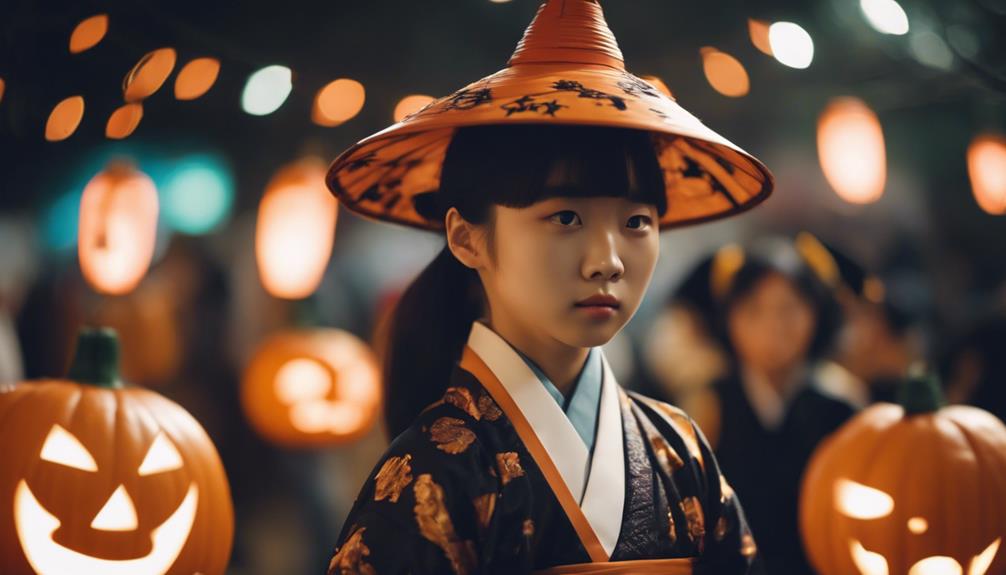
With the rise of Western influences in South Korea, Halloween celebrations have gained popularity and evolved to reflect a mix of global and local traditions. Itaewon has emerged as a favored spot for Halloween festivities in South Korea, influenced by its Western presence. Online streamers frequently broadcast live from Itaewon during Halloween, showcasing the vibrant and eclectic celebrations that blend Western and Korean elements.
Over the years, Korean Halloween celebrations have undergone a cultural evolution, incorporating a fusion of Western traditions with local customs. Younger generations in South Korea have enthusiastically embraced Halloween, actively participating in costume parties and themed events that reflect this cultural amalgamation. The influence of English-language schools and the impact of social media have played significant roles in popularizing Halloween in South Korea, making it a widely celebrated occasion among the younger demographic.
Thus, the Halloween celebrations in South Korea today reflect a harmonious blend of global influences and local traditions, creating a unique and vibrant cultural phenomenon that continues to evolve with each passing year.
Top Halloween Events in South Korea
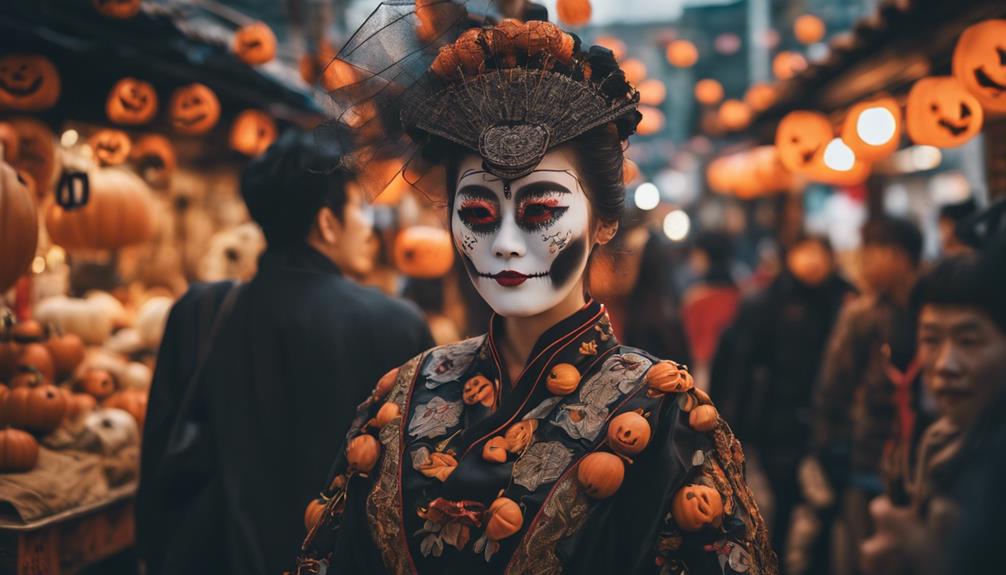
Get ready to explore the most thrilling and diverse Halloween events happening in South Korea.
- Lotte World's Halloween Horror Festival: This festival features a Halloween-themed parade with candy giveaways and attractions receiving a spooky makeover, providing a fun and spooky experience for attendees.
- Zombie Run Festival: Debuting in 2019, this modern Halloween activity involves participants divided into survivors and zombies for a 3-kilometer run, adding an interactive and adrenaline-pumping element to the Halloween celebrations.
- Dark Side of Seoul Ghost Walk: Offering year-round spooky tours exploring Seoul's urban legends, this event provides a unique way to celebrate Halloween in Korea, appealing to those interested in a more immersive and chilling experience.
- Korean Folk Village: Located in Yongin, this venue hosts traditional Halloween celebrations with evening performances themed around Korean urban legends, offering a cultural twist to the holiday festivities, making it a must-visit for those looking to experience Halloween with a touch of Korean heritage.
Halloween Costume Trends in Korea
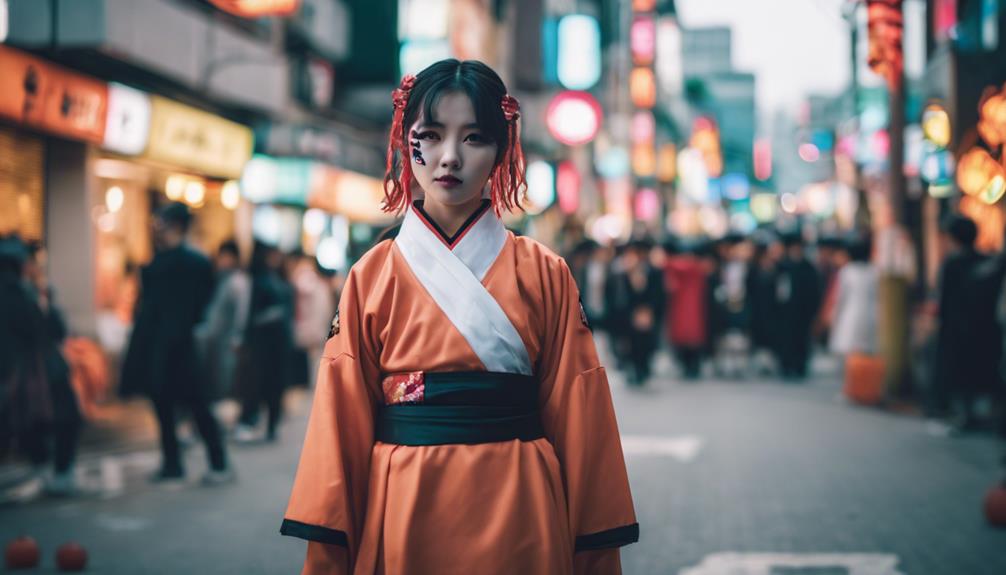
Explore the dynamic and popular Halloween costume trends embraced by South Koreans, ranging from K-pop idols to traditional Korean characters.
In Korea, Halloween costume choices often revolve around popular culture, with K-pop idols being a significant inspiration for many. DIY costumes are highly favored, emphasizing creativity and originality to stand out in the crowd.
Couples and group costumes are a common sight at Halloween celebrations, showcasing coordinated and themed ensembles. Traditional Korean characters, such as gisaeng or historical figures, also make appearances, adding a touch of local flair to the festivities.
Korean Halloween costume trends typically encompass a mix of cute, spooky, and trendy styles to cater to the diverse preferences of party-goers. Whether it's channeling a beloved idol, crafting a homemade masterpiece, or embodying a piece of Korean heritage, the Halloween costume scene in Korea offers a blend of modern and traditional elements for a truly memorable experience.
Where to Find Halloween Decorations in Korea
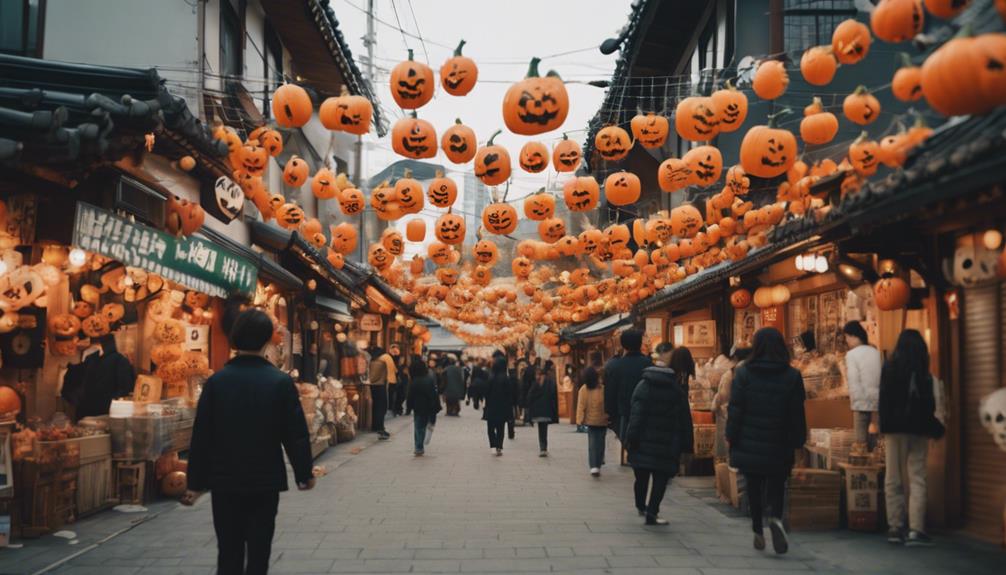
For Halloween enthusiasts in Korea, discovering the perfect decorations is made effortless with the numerous stores offering a wide selection of spooky supplies. Here are some popular spots where you can find Halloween decorations in Korea:
- Daiso: Known for its affordable and varied Halloween decorations, Daiso is a go-to store for those looking to add a touch of spookiness to their homes.
- Flying Tiger Copenhagen: This store is another favorite among Halloween lovers, offering unique and quirky decorations to help you create a festive atmosphere.
- Joy Party: Located in Itaewon, Joy Party is the place to go for a wide range of masks perfect for Halloween celebrations.
- Party House: Situated in Gangnam-gu, Party House is recommended for purchasing high-quality face paints to elevate your Halloween makeup game.
These stores, including Party N Deco in Seocho-gu, provide a diverse range of Halloween supplies, ensuring you have everything you need to decorate and dress up for the spooky season.
Embracing Spooky Traditions in South Korea
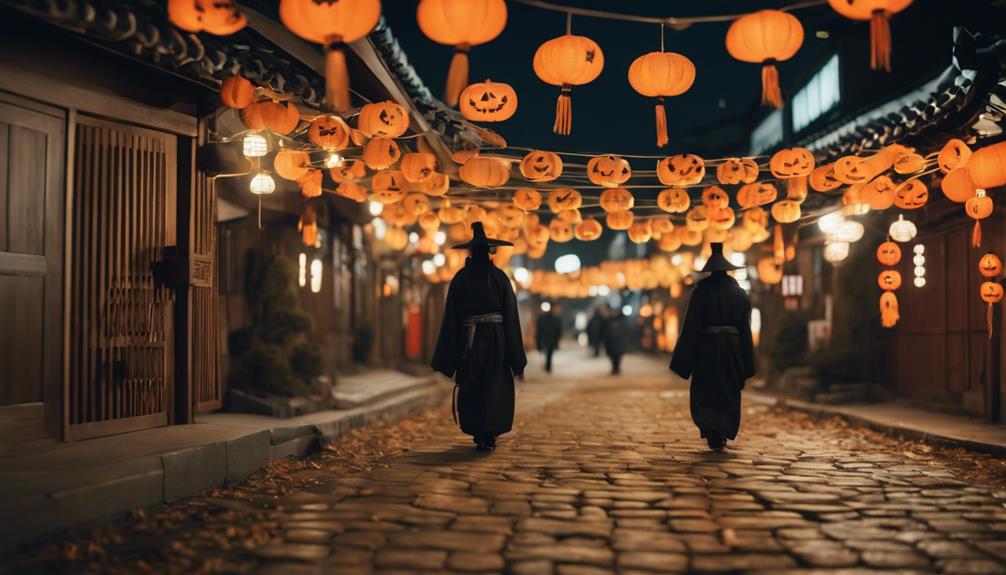
After discovering the ideal Halloween decorations in Korea, you can now explore how South Koreans embrace eerie traditions during the holiday season. Halloween has become increasingly popular in South Korea, with costume parties and themed events at amusement parks drawing in both locals and tourists. Itaewon, known for its Western influence and vibrant atmosphere, has emerged as a hotspot for Halloween festivities in South Korea. The streets of Itaewon come alive with spooky decorations and people dressed in creative costumes, adding to the holiday spirit.
Social media platforms have played a significant role in amplifying the popularity of Halloween in South Korea, especially among the younger generation. Many South Koreans share their Halloween experiences on social media, showcasing their costumes and the events they attend. Additionally, online streamers broadcasting live from Itaewon during Halloween have further contributed to the embrace of spooky traditions in South Korea, allowing a wider audience to participate virtually in the celebrations.
As a result, Halloween has become a vibrant and widely celebrated holiday in South Korea, with both traditional and modern elements blending seamlessly.
Impact of Globalization on Korean Halloween Festivities
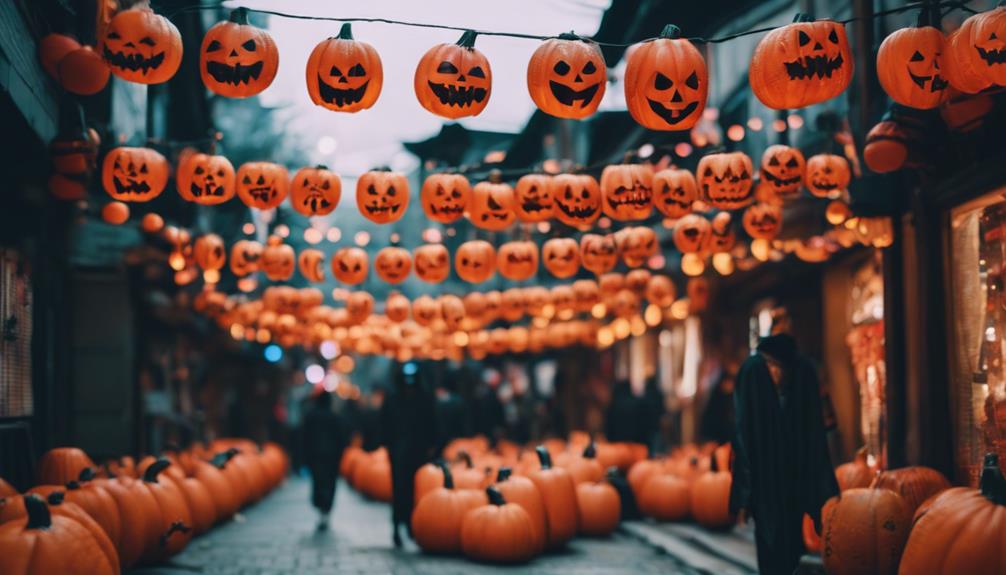
How has globalization influenced Korean Halloween festivities, particularly in introducing Western traditions like costume parties and themed events?
- Costumes: With the influence of Western culture, South Koreans have embraced the tradition of dressing up in elaborate costumes for Halloween, adding a playful and creative element to the celebrations.
- Themed Events: The concept of themed Halloween parties and events has gained popularity in South Korea, with many establishments, especially in areas like Itaewon, organizing special Halloween-themed nights to cater to the demand for such experiences.
- Social Media: Platforms like Instagram and YouTube have played an important role in spreading the Halloween spirit in South Korea, with users sharing photos and videos of their costumes and experiences, contributing to the overall excitement surrounding the holiday.
- Younger Generations: English-language schools and kindergartens have been instrumental in introducing Western Halloween traditions to younger generations in South Korea, ensuring that the festivities continue to evolve and thrive among the youth.
Frequently Asked Questions
Do South Koreans Celebrate Halloween?
In South Korea, Halloween has gained traction since the early 2000s, influenced by Western customs introduced through English schools and social media. Itaewon stands out as a hotspot for Halloween festivities due to its Western vibe and lively ambiance during the holiday season.
Social media platforms have significantly contributed to boosting Halloween's popularity among the younger demographic in South Korea. Online streamers often showcase live broadcasts from Itaewon, spotlighting the spirited atmosphere and eclectic costumes.
Do Koreans Go Trick or Treating?
Trick-or-treating isn't a common practice in Korea during Halloween. Instead, Korean children often partake in costume parties or festive events. While the concept of trick-or-treating is slowly gaining popularity in urban areas, it isn't deeply ingrained in Korean culture.
Some expat communities organize trick-or-treating events for kids to enjoy this tradition. Overall, Korean Halloween celebrations tend to focus more on costume parties, themed gatherings, and cultural performances rather than traditional trick-or-treating activities.
Do Koreans Dress up for Halloween?
Yes, South Koreans do dress up for Halloween. Many individuals, particularly young adults, participate in this tradition by donning elaborate costumes.
Costume parties are a common way to celebrate Halloween in Korea, with stores offering a diverse range of outfits and accessories. Korean idols and celebrities often showcase creative and themed costumes at various events.
The act of dressing up is a significant aspect of Halloween celebrations in South Korea.
What Happened in South Korea at Halloween?
You experienced a tragic event in Seoul's Itaewon district during Halloween, where over 150 partygoers, mainly in their 20s and 30s, lost their lives in a fatal crush.
More than 130 individuals were injured, with the majority trapped and crushed in a crowd surge. The incident included women, teenagers, and foreigners among the casualties.
Criticism arose due to the limited presence of only 137 police officers, highlighting concerns of government negligence in providing adequate security.
Conclusion
To sum up, South Koreans have wholeheartedly embraced the Halloween traditions, blending traditional customs with modern festivities. The evolution of Halloween celebrations in Korea reflects the cultural influences that have shaped the country's unique take on this spooky holiday.
From top Halloween events to popular costume trends, South Korea offers a diverse and exciting experience for those looking to embrace the spooky traditions. Globalization has only fueled the enthusiasm for Halloween in Korea, creating a vibrant and dynamic celebration that continues to captivate locals and visitors alike.
